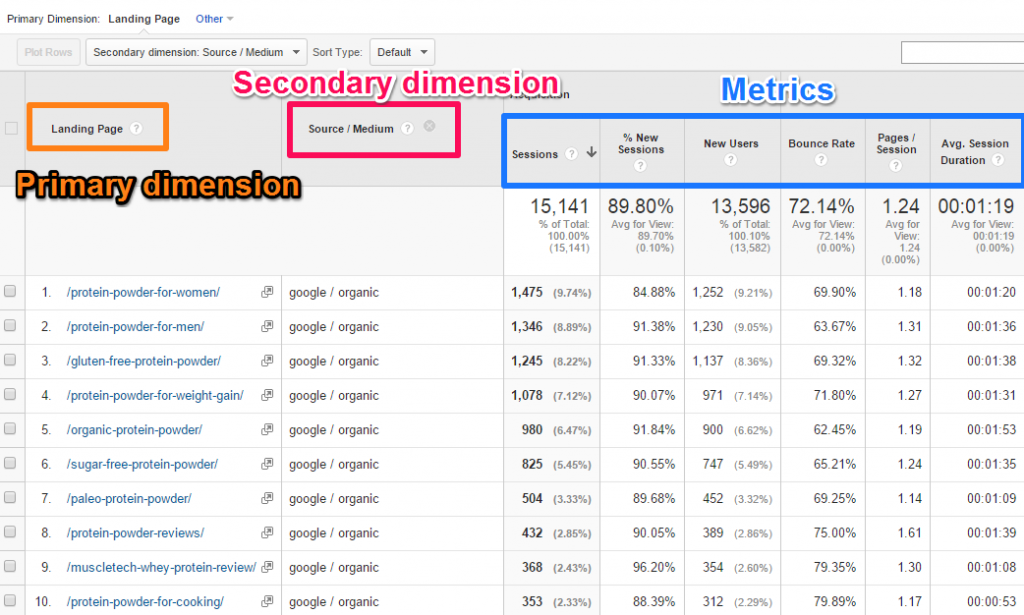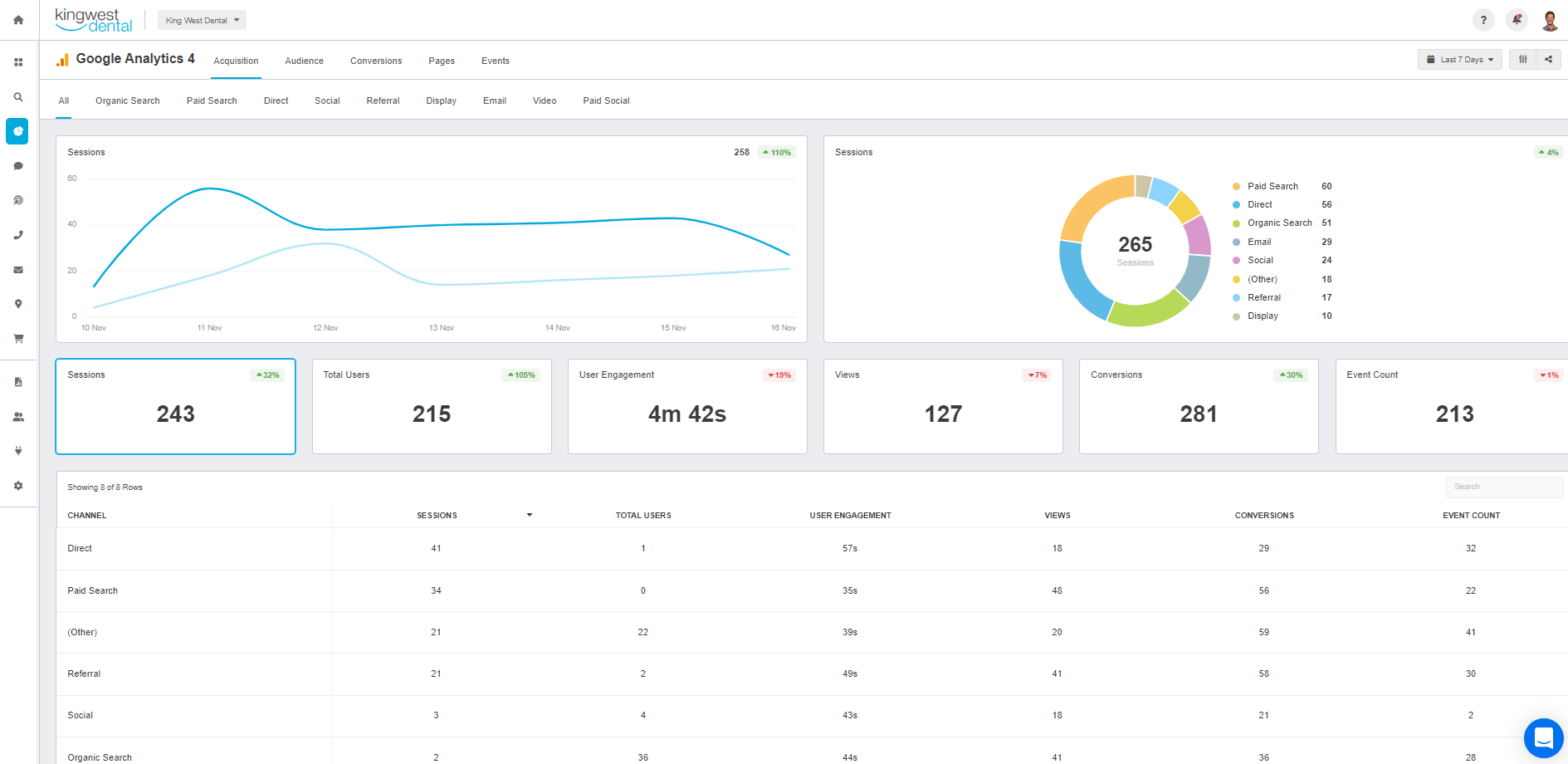Debunking the 'Secondary Dimension' in Google Analytics: Trick Insights
Debunking the 'Secondary Dimension' in Google Analytics: Trick Insights
Blog Article
Browsing the Depths of Second Measurement in Google Analytics: A Detailed Exploration on Its Functionality
Secondary measurements, though seemingly simple at initial glimpse, nurture a wide range of untapped potential waiting to be utilized. As we get started on this trip to explore the nuanced capability of additional measurements, we will certainly discover how this attribute can brighten patterns, reveal connections, and eventually pave the way for educated decision-making in the electronic landscape (what is a “secondary dimension” in google analytics?).
Comprehending Additional Measurements in Google Analytics

Comprehending just how second dimensions job is important for leveraging the complete power of Google Analytics. By incorporating main metrics with additional measurements, you can get beneficial insights that drive educated decision-making and optimization approaches.
Leveraging Secondary Dimensions for Information Evaluation
Building upon the foundational understanding of exactly how additional measurements improve information evaluation in Google Analytics, the use of these added layers of information ends up being vital in drawing out valuable insights for informed decision-making and optimization methods. By leveraging secondary measurements, experts can dig deeper right into the efficiency metrics by adding more context to the primary measurements, therefore revealing concealed patterns and connections that may not appear initially glance. This much deeper level of evaluation allows businesses to much better recognize customer actions, identify trends, and identify areas for enhancement.
Furthermore, secondary measurements offer a more thorough sight of the information, enabling division based upon various parameters such as demographics, tools, website traffic sources, and extra. This division helps with a much more granular evaluation, making it possible for organizations to tailor their projects and techniques to particular audience sections for improved targeting and customization. Basically, the critical usage of additional measurements encourages organizations to make data-driven choices that drive development and success in the electronic landscape.
Advanced Methods for Secondary Measurement Implementation
Discovering detailed techniques to harness the full potential of additional measurements in Google Analytics boosts the deepness and class of information evaluation for tactical decision-making. One innovative method for applying additional dimensions is the usage of personalized dimensions. Furthermore, integrating secondary measurements with innovative segments can provide also a lot more granular insights by using multiple layers of division to the data.
Interpreting Insights Through Second Dimensions

When interpreting insights via secondary measurements, it is vital to take into consideration the context of the information and exactly how different dimensions communicate with each other. Understanding which particular web traffic sources lead to greater conversion prices or recognizing which devices users prefer for making acquisitions can supply workable understandings for optimizing advertising and marketing projects and boosting general site efficiency. By thoroughly taking a look at the information with additional dimensions in mind, companies can make informed choices that drive significant outcomes and boost their electronic presence.
Maximizing Efficiency With Secondary Dimensions

One vital method to enhance performance with additional measurements is by segmenting data more granularly. This allows you to separate details factors that may be influencing your metrics and obtain a better understanding of what drives success or failure in your digital initiatives. By combining second dimensions such as 'tool category' and 'landing page,' you can determine which device kinds are most reliable for specific landing pages, allowing you could try here you to tailor your approaches appropriately.
In addition, making use of secondary measurements can help you recognize fads, patterns, and connections that may not appear when examining information with key dimensions alone. This deeper level of evaluation can result in even more educated decision-making and ultimately boost the overall efficiency of your web site or digital advertising projects.
Verdict
Finally, additional measurements in Google Analytics play a crucial duty in enhancing data evaluation and providing deeper understandings into web site efficiency. By using innovative strategies and translating the data effectively, companies can maximize their my blog approaches and boost overall efficiency. Understanding the functionality of secondary measurements is necessary for making educated choices and driving success in the electronic landscape.
By leveraging second measurements, analysts can dig deeper into the performance metrics by adding even more context to the primary dimensions, thus discovering covert patterns and relationships that could not be evident at initial glance. One innovative technique for applying additional measurements is the use of custom measurements.Having understood advanced methods like custom-made dimensions and regex for second measurement implementation in Google Analytics, the following vital step is interpreting the important understandings acquired with these sophisticated information division approaches. Analyzing understandings through second measurements entails examining the relationships between the key and additional measurements picked, revealing patterns, fads, and connections that Source might not be promptly evident when looking at the information in its totality.When translating understandings via secondary measurements, it is necessary to consider the context of the information and how different measurements interact with each various other.
Report this page